Best Glucose Disposal Agents

Glucose disposal agents have become a popular supplement category for influencing muscle building and fat metabolism. These supplements can help with glucose homeostasis, working like insulin to stimulate the storage and metabolism of glucose and help return elevated glucose levels toward normal.1
This insulin-like mechanism, known as a mimetic, mimics the functions of insulin, including promoting the entry of glucose into the muscle tissues, activating signal proteins, and regulating metabolic processes.2
Glucose disposal agents make it easier to stay lean and build muscle, allowing for more carbohydrate allowances in a diet, because they can shuttle more glucose into the muscle, away from fat storage, which helps influence performance, recovery, and muscle building.
Many glucose disposal agents are available that work on different functions of glucose metabolism. We’re rating the most popular ones here and explaining how they work and what the research says.
Cinnamon Extract
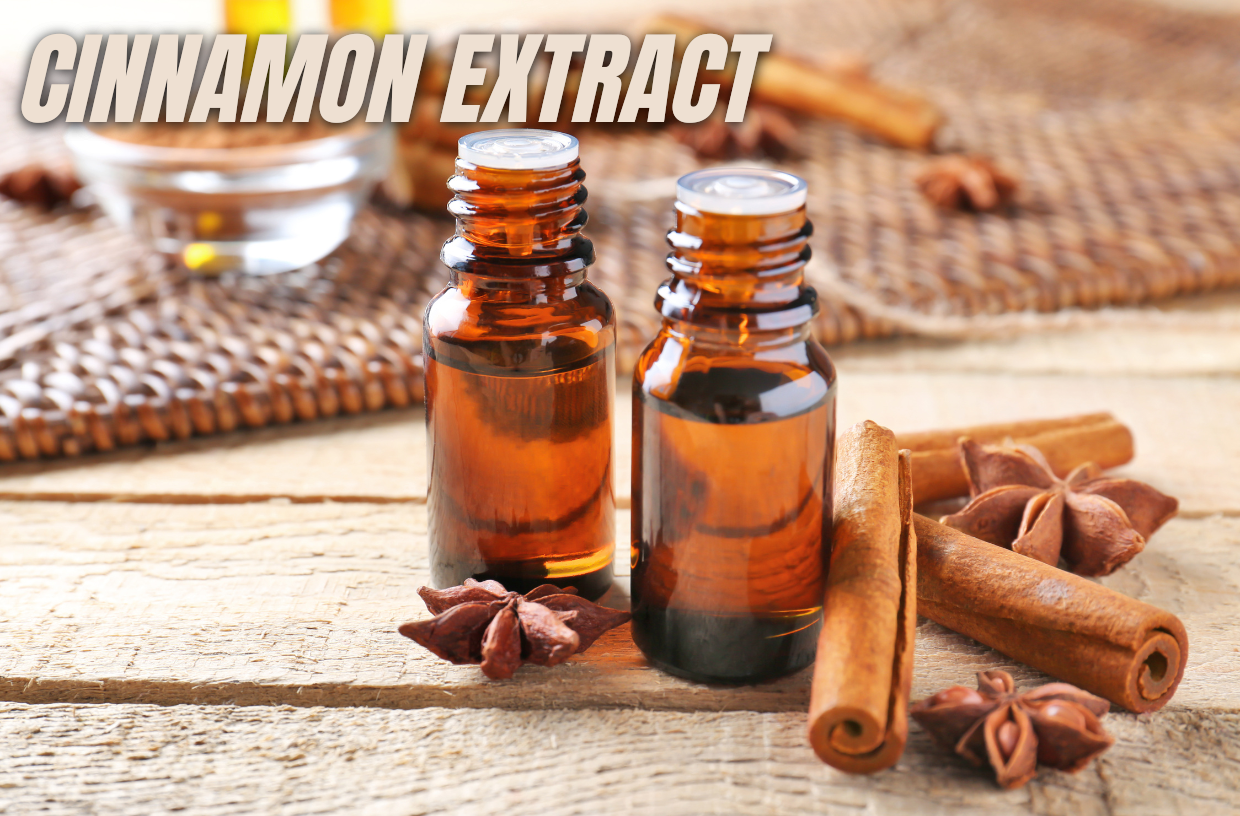 Cinnamon has been used for centuries in Western, Eastern and Ayurvedic medicine to treat many conditions, including management of blood glucose. Cinnamon has many varieties, including Cinnamomum cassia, C. loureiroi,C. burmannii, and C. zeylanicum, which is also known as Ceylon cinnamon. With a range of active phytochemicals, including 60 to 80 percent cinnamaldehyde, around 10 percent eugenol, 5 to 10 percent cinnamic acid, and 4 to 10 percent tannins, catechins, coumarins, proanthocyanidins, and terpenes, the variance in the bioactive compounds makes it difficult to standardize cinnamon and to investigate the properties and effectiveness of each variety.3
Cinnamon has been used for centuries in Western, Eastern and Ayurvedic medicine to treat many conditions, including management of blood glucose. Cinnamon has many varieties, including Cinnamomum cassia, C. loureiroi,C. burmannii, and C. zeylanicum, which is also known as Ceylon cinnamon. With a range of active phytochemicals, including 60 to 80 percent cinnamaldehyde, around 10 percent eugenol, 5 to 10 percent cinnamic acid, and 4 to 10 percent tannins, catechins, coumarins, proanthocyanidins, and terpenes, the variance in the bioactive compounds makes it difficult to standardize cinnamon and to investigate the properties and effectiveness of each variety.3
Mechanism of Action
In vitro and in vivo studies suggest that the biological compounds in cinnamon may activate the insulin receptor by multiple mechanisms that include increased auto-phosphorylation, increased glucose transporter type four (GLUT-4) activity, inhibition of pancreatic and intestinal amylase and glucosidase, and increased glycogen synthesis in the liver, thus improving insulin sensitivity, glycemic control, and lipid levels.4
Multiple compounds are responsible for cinnamon’s hypoglycemic properties and have been isolated and tested in clinical trials, including cinnamaldehyde. This compound has been shown to increase insulin secretion from pancreatic β-cells and decrease glucose levels.4 It has also been shown to increase GLUT-4 receptor expression allowing for glucose entry into cells. This may be the result of an adenosine monophosphate kinase (AMPK) signaling pathway, a key regulator of many pathways of glucose metabolism.
Efficacy in Human Studies
The existing published studies evaluating cinnamon for glycemic control are difficult to interpret. In a published review that evaluated 11 randomized clinical trials (RCTs), the use of cinnamon as a dietary supplement in adults with type 2 diabetes was evaluated for glycemic control.3
Studies ranged from 4 to 16 weeks, and only 7 were double-blind studies. In 10 of the studies, participants were also using a hypoglycemic medication. Doses ranged from 120 to 6000 milligrams per day of cinnamon, and species of cinnamon also varied. Some studies lacked an accurate description of the cinnamon species.3
All studies showed some reduction in fasting plasma glucose (FPG) and modest decreases in hemoglobin A1c (HbA1c)—a measure of glycated hemoglobin—while changes in placebo groups were minimal. Within these studies, however, sample sizes were small, and some trials were conducted on patients with various levels of FPG, who were also being treated with other hypoglycemic agents.3
Currently, the verdict still isn’t clear when it comes to fully understanding cinnamon, its mechanism of function, and which bioactives are ultimately responsible for maximizing blood glucose control.
Rating: 
Chromium
 Chromium is an essential trace mineral needed in the diet and has functions in glucose, protein, and lipid metabolism. Research has suggested chromium may be effective to help reduce food intake and body weight and increase glucose metabolism, particularly in those with insulin resistance and/or type 2 diabetes.5 Chromium has low absorption; however, trivalent chromium, such as chromium picolinate, is absorbed well and is the form commonly found in glucose disposal supplements.
Chromium is an essential trace mineral needed in the diet and has functions in glucose, protein, and lipid metabolism. Research has suggested chromium may be effective to help reduce food intake and body weight and increase glucose metabolism, particularly in those with insulin resistance and/or type 2 diabetes.5 Chromium has low absorption; however, trivalent chromium, such as chromium picolinate, is absorbed well and is the form commonly found in glucose disposal supplements.
Chromium and the GLUT-4 Transporter
Chromium picolinate has been shown to improve plasma membrane-based aspects of glucose metabolism, including improving GLUT-4 translocation and glucose transport into adipocytes via lowering plasma membrane cholesterol and mediating AMPK, a key regulator of energy metabolism.6
Chromium picolinate increases membrane fluidity by decreasing cholesterol content of the plasma membrane. In one study, it was shown that GLUT-4 redistribution in chromium picolinate-treated cells only occurred in cells cultured with high glucose concentrations that resembled the diabetic state, and not in non-diabetic conditions.6 Therefore, accumulation of GLUT-4 transporter at the plasma membrane may be dependent on the chromium picolinate-induced cholesterol loss.
Chromium Supplementation = Mixed Results
A systematic review and meta-analysis of 25 studies showed that chromium supplementation was effective for glycemic control in patients with diabetes, in addition to improving triglycerides and HDL-cholesterol levels.7
Another systematic review and meta-analysis of 20 RCTs evaluated the effect of chromium on glucose, insulin, and HbA1c.8 The review summarizes data from participants that had type 2 diabetes and those that had impaired glucose tolerance. The meta-analysis showed no association between chromium and glucose or insulin concentrations among non-diabetic subjects, while the data for persons with diabetes were inconclusive.8
Although research on diabetics seems promising, for everyday use in non-diabetics, chromium may not provide any benefit as a glucose disposal agent.
Rating: 
Bitter Melon
 Momordica charantia, also known as bitter melon, is a vegetable of the Curcubitaceae family, and has traditionally been used in herbal medicine. Bitter melon is grown and cultivated in Africa, South America, and Asia.9 Bitter melon has a strong, bitter flavour and has been shown to have anti-diabetic effects that can be attributed to its bioactive phytocompounds including vicine, charantin, glycosides, karaviloside, and triterpenes, to name a few.9
Momordica charantia, also known as bitter melon, is a vegetable of the Curcubitaceae family, and has traditionally been used in herbal medicine. Bitter melon is grown and cultivated in Africa, South America, and Asia.9 Bitter melon has a strong, bitter flavour and has been shown to have anti-diabetic effects that can be attributed to its bioactive phytocompounds including vicine, charantin, glycosides, karaviloside, and triterpenes, to name a few.9
Many Mechanisms of Bitter Melon
Bitter melon appears to exhibit its anti-diabetic effects through multiple mechanisms, including the suppression of mitogen-activated protein kinases (MAPKs) and NF-κβ in pancreatic cells, promotion of glucose and fatty acid catabolism, stimulation of fatty acid absorption, induction of insulin production and secretion, uptake of glucose by GLUT-4 translocation, improvement of insulin resistance, activation of AMPK, and inhibition of glucose metabolism enzymes.9
Bitter melon’s actions work synergistically and initiate a cascade effect. Bitter melon functions as a peroxisome proliferator-activated receptor gamma (PPAR-γ) ligand activator, stimulating the expression of genes involved in lipid catabolism and glucose utilization.10 Bitter melon stimulates adiponectin and the PPAR-g pathway that can upregulate leptin and downregulate resistin to alleviate insulin resistance. Bitter melon can also enhance AMPK activation and the expression of signaling pathways JNK and Akt, resulting in the activation of GLUT-4 translocation and enhancing glucose uptake.10
Lack of Results
A meta-analysis showed that consumption of bitter melon between 1 and 6 grams daily for 4 to 12 weeks by 208 participants with type 2 diabetes didn’t significantly improve FPG or HbA1C compared with a placebo.11
Another meta-analysis of 10 studies of 4 to 16 weeks in length including over 1000 type 2 diabetics found that although there were favourable effects on blood glucose levels, the studies were considered low quality and lacked standardization of extracts for bitter melon.12
Despite the many promising mechanisms of action of bitter melon, research into bitter melon has yielded conflicting results in small and short-term clinical studies. More research into the exact compounds of the bitter melon that exert these hyperglycemic effects is needed.
Rating: 
Fenugreek
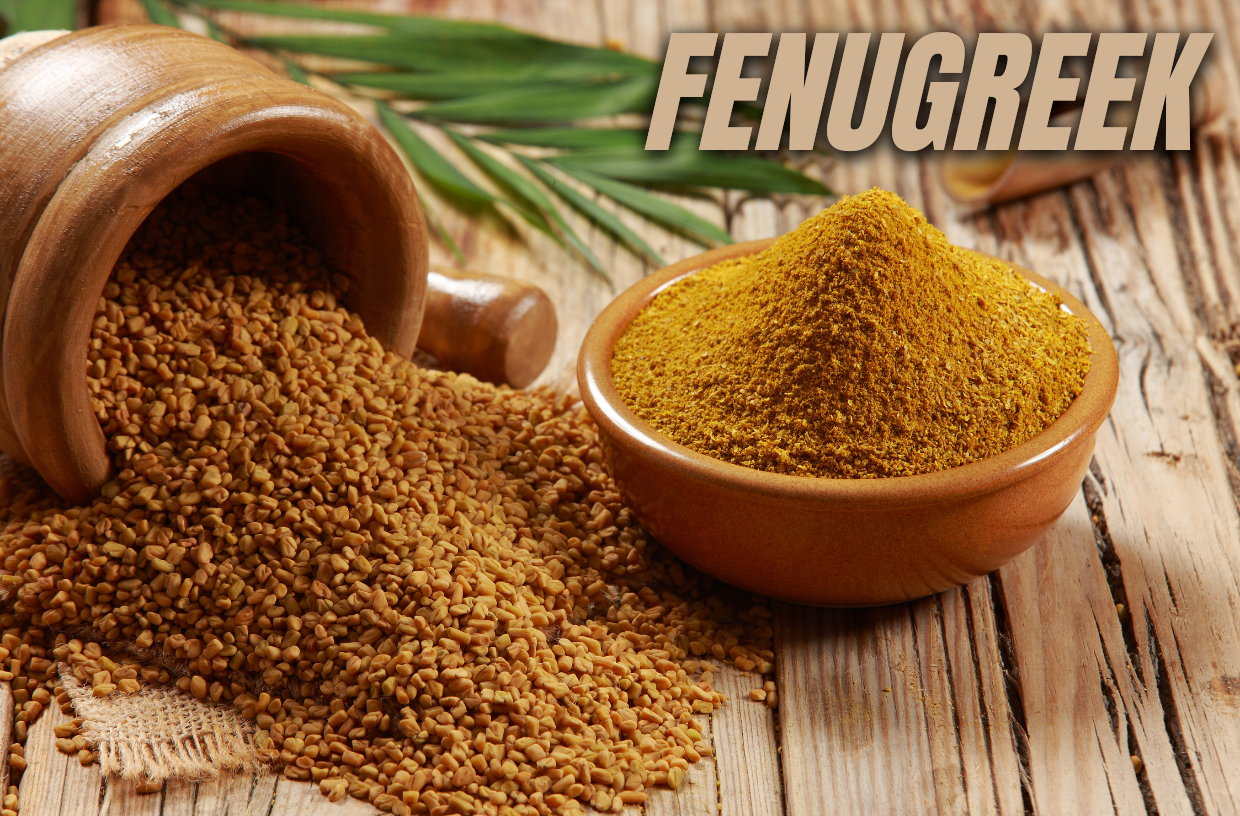 Fenugreek, also known as Trigonella foenum-graecum, is a clover-like herb native to Southern Europe, the Mediterranean, North Africa, and Western Asia. It’s commonly used in cooking for its flavour and in soaps and cosmetics for its aromatic smell. Fenugreek also has traditional medicinal uses to lower blood glucose levels and boost testosterone.13
Fenugreek, also known as Trigonella foenum-graecum, is a clover-like herb native to Southern Europe, the Mediterranean, North Africa, and Western Asia. It’s commonly used in cooking for its flavour and in soaps and cosmetics for its aromatic smell. Fenugreek also has traditional medicinal uses to lower blood glucose levels and boost testosterone.13
Studies have demonstrated the hypoglycemic and antihyperlipidemic properties of oral fenugreek seed powder are because of the high amount of fibre and antidiabetic compounds present in the seeds, leaves, and extracts.
The most bioactive compounds of fenugreek are the non-protein amino acid, 4-hydroxyisoleucine and diosgenin.14 The fibre fraction has also shown glucose-lowering abilities.
4-Hydroxyisoleucine: A Novel Insulinotropic
The active ingredient in fenugreek, 4-hydroxyisoleucine, has been shown to be an insulin secretagogue, stimulating the secretion of insulin and improving glucose and insulin tolerance, particularly in the presence of glucose.14
In diabetic rats, an improvement of the diabetic state was associated with the stimulating effect of 4-hydroxyisoleucine on pancreatic b-cell function, and in normal rats, 4-hydroxyisoleucine was able to stimulate insulin secretion and improve glucose tolerance, suggesting its potential in the treatment of insulin resistance.15 The stimulating effect of 4-hydroxyisoleucine is glucose dependent, and the more glucose concentration is increased, the more insulin response is amplified.
In addition, one study showed that 4-hydroxyisoleucine is more effective on insulin release at much lower concentration than other amino acid secretagogues such as leucine and isoleucine. 4-hydroxyisoleucine was 25 times more effective than leucine and 15 times more effective than isoleucine.16
4-hydroxyisoleucine has also been shown in rat muscle cells to increase glucose uptake via GLUT-4 translocation to the plasma membrane after 16 hours of exposure to 4-hydroxyisoleucine.17
Diosgenin
 The other active component of fenugreek, diosgenin, has been shown to have positive metabolic effects on the pancreas, liver, skeletal muscle, and adipose tissue that help restore insulin sensitivity, glucose homeostasis, and blood lipid parameters.18
The other active component of fenugreek, diosgenin, has been shown to have positive metabolic effects on the pancreas, liver, skeletal muscle, and adipose tissue that help restore insulin sensitivity, glucose homeostasis, and blood lipid parameters.18
Diosgenin has been shown to promote insulin secretion and preserve normal glucose concentrations by restoring β-cell function.18 Diosgenin has also been found to enhance insulin action in skeletal muscle and adipose tissue.
Clinical Research Support
The effect of fenugreek was examined in a meta-analysis of diabetes and pre-diabetes. In 10 studies, fenugreek significantly decreased the levels of FBG, HbA1c, and total cholesterol.19 The results suggest that fenugreek powder has hypoglycemic and total cholesterol lowering efficacy.
In a long-term, 3-year randomized controlled study, the efficacy of fenugreek powder to prevent conversion to type 2 diabetes was observed. The fenugreek group saw a significant reduction in FPG, postprandial plasma glucose (PPG) and low-density lipoprotein cholesterol (LDL) whereas serum insulin increased significantly.20 It was observed that controls had a four times higher chance of developing diabetes than subjects in the fenugreek group. The outcome of diabetes in the fenugreek group was positively associated with serum insulin and negatively associated with insulin resistance.20 This study showed positive results with supplementation of large doses of fenugreek powder of 10 grams per day.
Another study assessed the efficacy and safety of fenugreek seed extract in supporting healthy glucose metabolism in adults diagnosed with prediabetes as a stand-alone treatment. Fifty-four participants were randomized to receive 500 milligrams per day of fenugreek seed extract or a placebo for 12 weeks.21 Treatment with fenugreek seed extract resulted in significant difference in FBG, postprandial blood glucose (PBG) and triglycerides compared to control. The results of the study indicated that fenugreek seed extract may positively influence blood glucose metabolism.21
Fenugreek’s positive results on both the use of powder and extract for improving glucose metabolism, particularly during high glucose intake, show its potential as a glucose disposal agent, particularly for those using high-carbohydrate, muscle-building diets.
Rating: 
Alpha Lipoic Acid
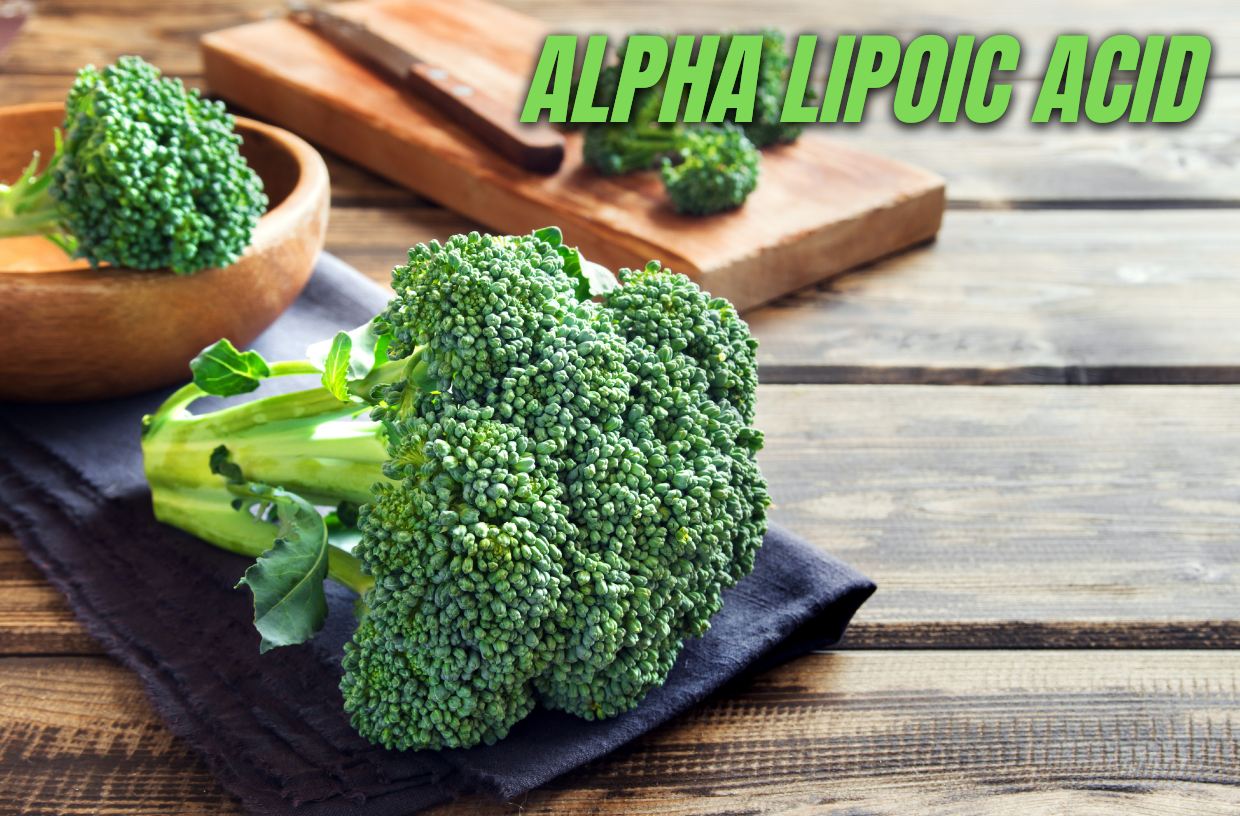 Alpha lipoic acid (ALA) is an organosulfur compound produced by plants, animals, and humans. In the Krebs cycle, ALA plays important roles in various chemical reactions, acting as a co-factor for some enzymatic complexes involved in energy generation in the mitochondria of the cell.22
Alpha lipoic acid (ALA) is an organosulfur compound produced by plants, animals, and humans. In the Krebs cycle, ALA plays important roles in various chemical reactions, acting as a co-factor for some enzymatic complexes involved in energy generation in the mitochondria of the cell.22
Structurally speaking, ALA has a single chiral center and asymmetric carbon, resulting in two optical isomers, R and S-lipoic acid. Thus, ALA has two enantiomeric forms called S and R enantiomers, which are mirror images of each other.22 The R form is present naturally and is the form found in supplements.
ALA, AMPK and Insulin Secretion and Sensitivity
In a study on obese rats with reduced AMPK activity in skeletal muscle tissue, administration of ALA resulted in activation of AMPK, a rise in insulin-stimulated glucose disposal, and an increase in fatty acid oxidation.23 These results suggest that ALA ameliorates insulin sensitivity through AMPK activation.23
ALA has also been shown to stimulate glucose uptake by translocation of both GLUT-1 and GLUT-4 transporters in fat and muscle cells, mimicking insulin action. In both cell types, insulin-stimulated glucose uptake is reduced by inhibitors of MAPK.24
Like insulin, ALA increased the kinase activity of the alpha and beta isoforms of MAPK. Treating cells with MAPK inhibitors reduced the ALA-induced stimulation of glucose uptake by 66 percent and 55 percent, respectively.24 In contrast, treatment with a structural analog that doesn’t inhibit MAPK was without effect on glucose uptake.
Exercise Training, ALA and Insulin Action in Animal Models
One study examined the interactions of exercise and ALA on insulin action and oxidative stress in skeletal muscle of obese Zucker rats.25 Animals remained sedentary, received ALA (30 milligrams per kilogram per day), performed exercise (treadmill running), or underwent both ALA treatment and exercise for 6 weeks.
Exercise alone or in combination with ALA resulted in a significant lowering of the glucose (26 to 32 percent) and insulin (29 to 30 percent) responses compared with sedentary controls.25 Treatment with only ALA decreased (19 percent) the glucose-insulin index (indicative of increased insulin sensitivity), and this parameter was reduced (48 to 52 percent) to the greatest extent in the exercise group and combined treatment groups.25
 Individually, exercise or ALA each increased insulin-mediated glucose transport activity in isolated muscles. The greatest increases in insulin action in muscles were observed in the combined treatment group. The improvement in insulin-mediated glucose transport in muscle because of ALA was associated with decreased protein carbonyl levels (an index of oxidative stress).
Individually, exercise or ALA each increased insulin-mediated glucose transport activity in isolated muscles. The greatest increases in insulin action in muscles were observed in the combined treatment group. The improvement in insulin-mediated glucose transport in muscle because of ALA was associated with decreased protein carbonyl levels (an index of oxidative stress).
There were no interactive effects of exercise training and ALA on GLUT-4 protein or protein carbonyl levels. These results indicate that exercise and ALA have an additive effect, improving insulin action in insulin-resistant skeletal muscle.25 The further improvement in muscle glucose transport in the combined group wasn’t associated with additional upregulation of GLUT-4 protein or a further reduction in oxidative stress.
Further studies on ALA, exercise, and insulin action showed similar positive results in animal models of obesity.26,27 Additional research also showed that the additive interaction between exercise training and ALA treatment on glucose transport activity was associated with specific alterations in the insulin-signaling pathway.
Human Research
One randomized study examined the effects of ALA treatment over a 2-month period in type 2 diabetic patients. Patients received either 300 milligrams of ALA daily or a placebo. The study showed a significant decrease in fasting blood glucose (FBG) and 2-hour PBG levels and insulin resistance in the ALA group.28 The comparison of differences between fasting blood glucose and insulin resistance at the beginning and at the end of study in the ALA treated group and the placebo group were also significant.28
In a systematic review and dose-response meta-analysis of 16 randomized trials, 1035 patients who received 500 milligrams per day of ALA experienced a reduction in HbA1c, FPG, total glucose, and C-reactive protein.29 The dose-response meta-analyses also indicated a strong linear decrease in body weight with ALA supplementation of more than 600 milligrams per day.29
The positive research on ALA’s glucose-lowering ability and its effect on stimulating insulin signalling in muscles, specifically when combined with exercise, certainly makes the case for ALA as a compelling glucose disposal agent.
Rating: 
Banaba Leaf
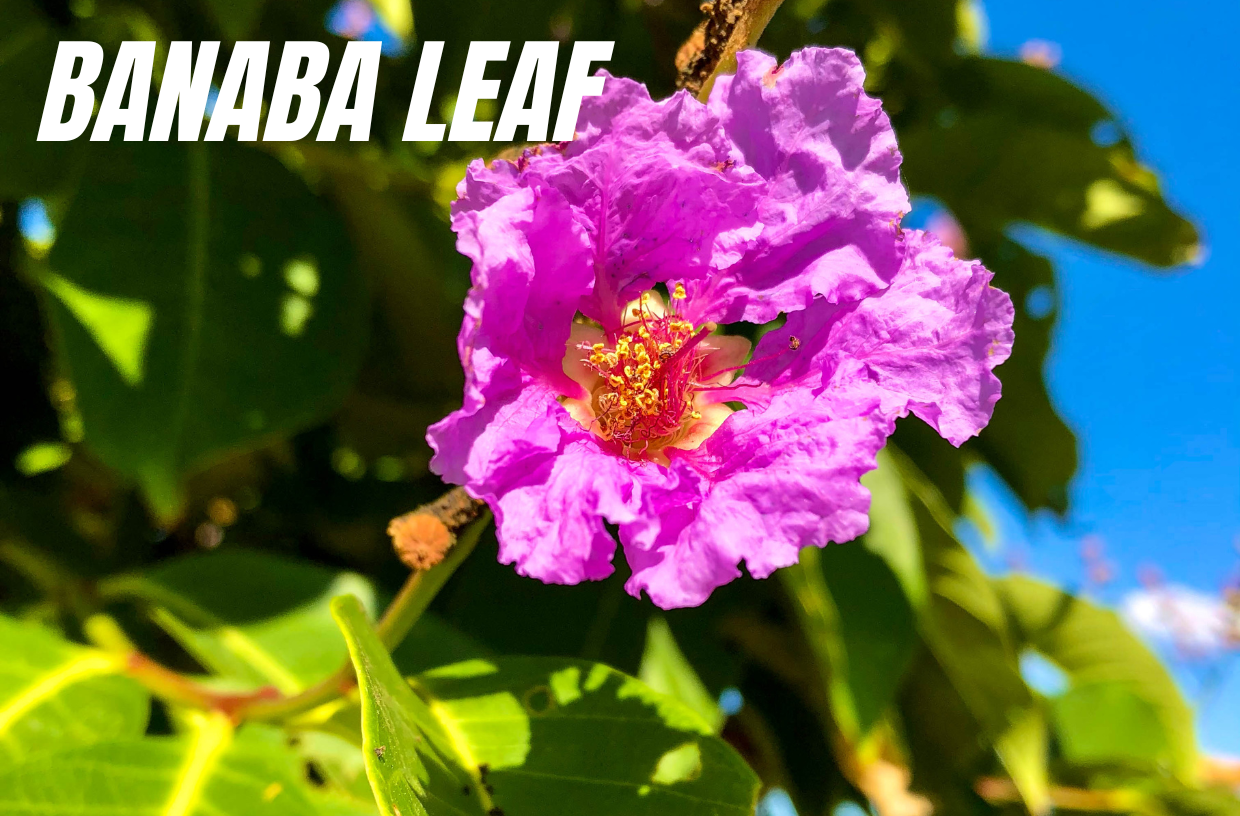 Banaba (Lagerstroemia speciosa L.) extracts have been used in traditional medicine in India, Malaysia, and the Philippines. Banaba, also known as jarul or giant crape myrtle, contains many active ingredients in the leaves.30 Research has suggested that the antihyperglycemic activity of banaba is a result of the combination of its unique phytocompounds, including the ellagitannins, ellagic acid, corosolic acid and quercetin.
Banaba (Lagerstroemia speciosa L.) extracts have been used in traditional medicine in India, Malaysia, and the Philippines. Banaba, also known as jarul or giant crape myrtle, contains many active ingredients in the leaves.30 Research has suggested that the antihyperglycemic activity of banaba is a result of the combination of its unique phytocompounds, including the ellagitannins, ellagic acid, corosolic acid and quercetin.
Regulation of Glucose & Lipid Metabolism
Banaba has beneficial effects on both glucose and lipid metabolism involving multiple mechanisms, including enhanced cellular uptake of glucose, impaired hydrolysis of sugars, decreased gluconeogenesis and the regulation of lipid metabolism.30 These effects may be mediated by PPAR-g, MAPK, NF-κB, and other signal transduction factors.
One study showed that extracts of banaba stimulated glucose uptake by adipocytes. The extracts also inhibited adipocyte differentiation induced by insulin.31 The inhibitory activity was further demonstrated by reductions of PPAR-g mRNA and GLUT-4 in cells induced from pre-adipocytes in the presence of banaba.31
The unique combination of a glucose uptake stimulatory activity, the absence of adipocyte differentiation activity and effective inhibition of adipocyte differentiation in cells suggests that banaba may be a useful supplement for not just lowering blood glucose but also in weight management.
As for the individual compounds of banaba, ellagitannins have been shown to stimulate insulin-like glucose transport, as well as inhibit differentiation in adipocyte cells, while ellagic acid derivatives exhibit inhibitory activity with respect to glucose transport.32 Corosolic acid has been shown to influence GLUT-4 translocation in the plasma membrane in muscle cells independently of an insulin-like glucose mediated signaling pathway.33 Corosolic acid doesn’t stimulate this pathway but does significantly reduce blood glucose and plasma insulin levels33. Corosolic acid has been shown to inhibit α-amylase and α-glucosidase activities inhibiting hydrolysis of sugar in the intestine.
Lower Blood Glucose Levels & Weight-Loss Potential
A randomized, double-blind placebo-controlled clinical trial evaluated the effects of banaba on metabolic syndrome, insulin sensitivity and insulin secretion.34 Half of the patients received 500 milligrams of banaba twice per day (before breakfast and dinner) for 12 weeks, while the other half received a placebo of same dosage.
After banaba administration, there were significant decreases in systolic blood pressure (SBP) FPG, triglycerides, very low-density lipoprotein (VLDL), insulin secretion, and insulinogenic index.34 Some patients of the banaba group showed remission of metabolic syndrome.34
A short 2-week study that evaluated banaba extract standardized to 18 percent corosolic acid showed a 12 percent decrease in fasting, as well as 60-minute PPG levels, and reported an average 3-pound weight loss.35 Although this supplement contained a high level of corosolic acid, it wasn’t clear if the effect was entirely because of the corosolic acid or a combination of the corosolic acid with tannin components.
Banaba leaf appears to have many beneficial active ingredients when it comes to blood glucose control on multiple levels, plus benefits when it comes to dropping body fat and staying lean.
Rating: 
Gymnena Sylvestre
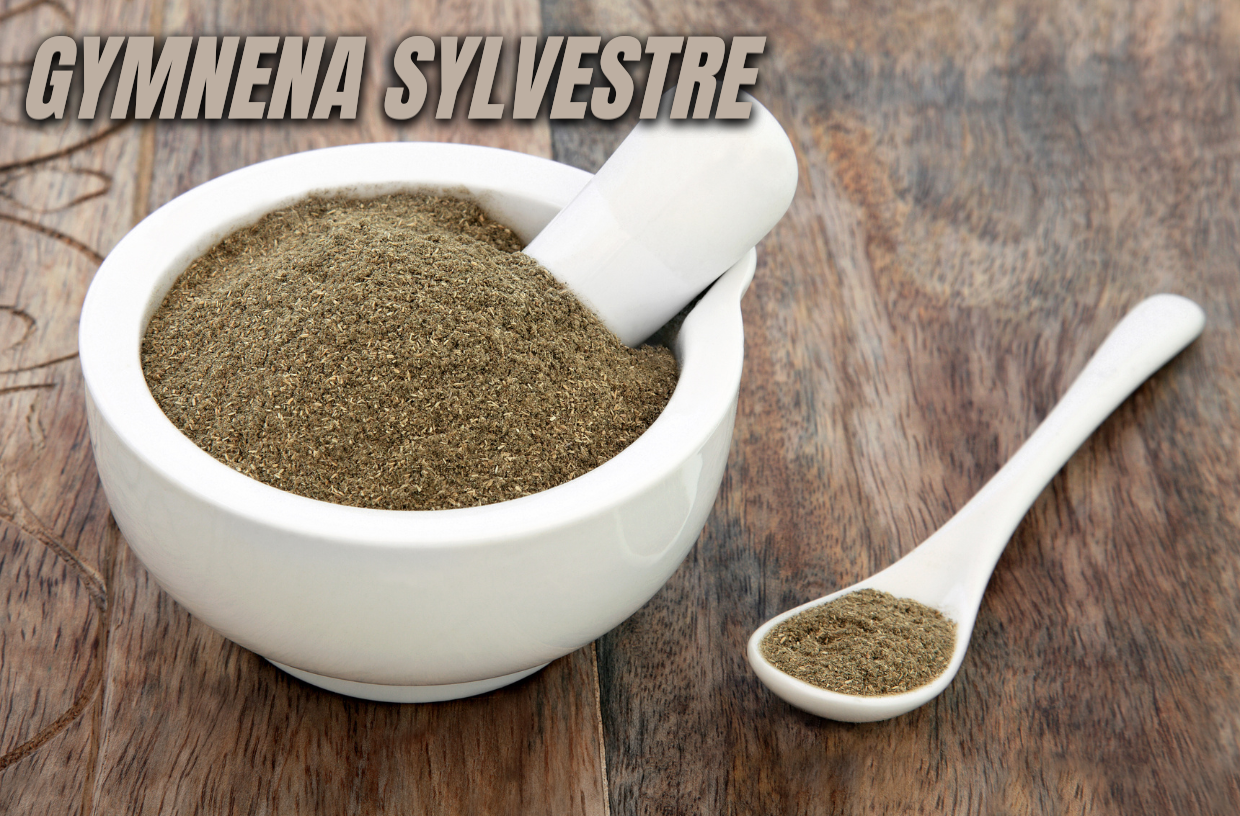 Gymnena sylvestre is a tropical plant native to Africa, India, and Australia. This woody, climbing plant has been traditionally used in Ayurvedic medicine for its therapeutic benefits when it comes to controlling blood sugar. The phytoconstituents responsible for its ability to lower glucose include the triterpene saponins, gymnemic acids, gymnemagenin and gurmarin.36 Gymnema sylvestre has shown positive effects on blood sugar homeostasis, controlling sugar cravings, and promoting regeneration of the pancreas.36
Gymnena sylvestre is a tropical plant native to Africa, India, and Australia. This woody, climbing plant has been traditionally used in Ayurvedic medicine for its therapeutic benefits when it comes to controlling blood sugar. The phytoconstituents responsible for its ability to lower glucose include the triterpene saponins, gymnemic acids, gymnemagenin and gurmarin.36 Gymnema sylvestre has shown positive effects on blood sugar homeostasis, controlling sugar cravings, and promoting regeneration of the pancreas.36
Multiple Actions of Gymnema Sylvestre
Gymnema sylvestre’s mode of action occurs in several ways. Gymnema can work by stimulating insulin secretion from the pancreas and by delaying glucose absorption in the blood. In the intestine, gymnemic acids attach to the receptor present in the external layer of the intestine, thereby preventing the absorption of sugar molecules by the intestine, leading to a reduction in blood sugar levels.36
The hypoglycemic effect of gymnemic acids includes a cascade of events starting from modulation of the activity of incretin hormone, which trigger insulin secretion and release. Incretins are protein hormones whose functions include the modulation of glucose metabolism by stimulating the release of insulin by the β-cells and, at the same time, inhibiting the release of glucagon by pancreatic α-cells.
Gymnemic acids also increase regeneration of pancreatic islet cells to enhance enzyme mediated uptake of glucose. This process decreases glucose and fatty acid production in the small intestine.
Clinical Research Support: Glycemic Control
A systematic review and meta-analysis evaluated the effect of Gymnema sylvestre supplementation on glycemic control in type 2 diabetes.37 This meta-analysis consisted of 10 studies with a total of 419 participants that showed that Gymnema sylvestre supplementation significantly reduced fasting blood glucose (standardized mean difference of 1.57 milligrams per decilitre with a 95 percent confidence interval of 2.22 to -0.93), postprandial blood glucose (PPBG) (standardized mean difference of 1.04 milligrams per decilitre, with a 95 percent confidence interval of 1.53 to -0.54), and HbA1c compared to baseline.37
Further, the study also found that Gymnema sylvestre significantly reduced triglycerides and total cholesterol compared to baseline.37 Gymnema sylvestre supplementation is therefore shown to be effective for improving glycemic control and reducing lipid levels, particularly in those with diabetes. Gymnema may be considered an effective glucose disposal agent.
Rating: 
Berberine
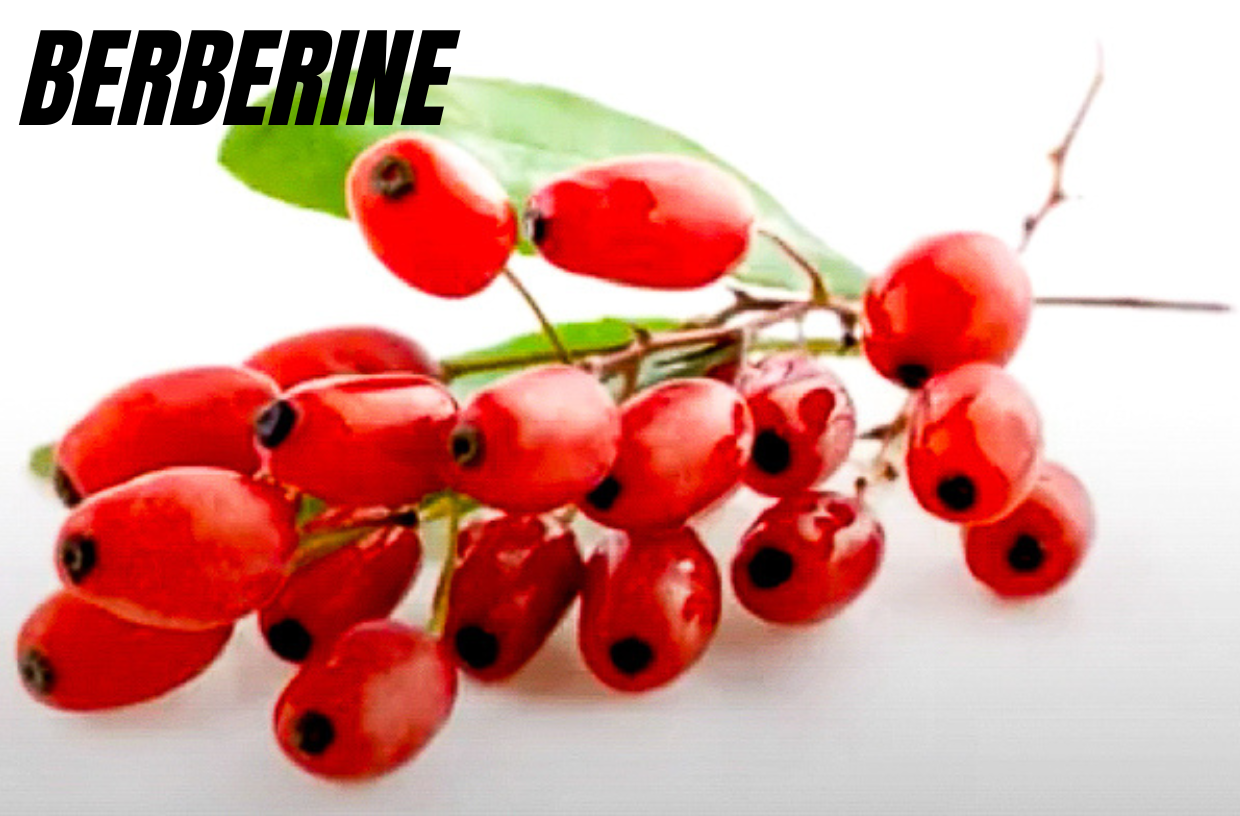 Berberine is an alkaloid found in over 450 species of plants, but the most common source is extracted from the Berberis vulgaris shrub. Berberine has traditional uses in Chinese and Ayurvedic medicine. It has shown to be effective for improving blood glucose disposal, improving insulin efficiency, lipid metabolism and body composition.38
Berberine is an alkaloid found in over 450 species of plants, but the most common source is extracted from the Berberis vulgaris shrub. Berberine has traditional uses in Chinese and Ayurvedic medicine. It has shown to be effective for improving blood glucose disposal, improving insulin efficiency, lipid metabolism and body composition.38
Berberine and Glucose Metabolism
In two animal models of insulin resistance and in insulin-responsive cell lines, the effects of berberine were investigated. Berberine reduced body weight and caused a significant improvement in glucose tolerance without altering food intake in db/db mice. Similarly, berberine reduced body weight and plasma triglycerides and improved insulin action in high-fat–fed Wistar rats.39
Berberine downregulated the expression of genes involved in lipogenesis and upregulated those involved in energy expenditure in adipose tissue and muscle.39 Berberine treatment resulted in increased AMPK activity in 3T3-L1 adipocytes and L6 myotubes, increased GLUT-4 translocation in L6 cells in a phosphatidylinositol 3′ kinase-independent manner, and reduced lipid accumulation in 3T3-L1 adipocytes.39
Berberine may also inhibit protein-tyrosine phosphatase 1B (PTP1B), thus increasing insulin sensitivity.40 In diabetic mice, berberine was shown to mimic insulin action by increasing glucose uptake ability by 3T3-L1 adipocytes and L6 myocytes in an insulin-independent manner, inhibiting phosphatase activity of PTP1B, and increasing phosphorylation of IR, IRS1 and Akt in 3T3-L1 adipocytes.40 In diabetic mice, berberine lowers hyperglycemia and improves impaired glucose tolerance, but doesn’t increase insulin release and synthesis.40
Clinical Research for Treatment of Type 2 Diabetes
Berberine is one plant alkaloid that has significant positive research to support its effectiveness for the treatment of type 2 diabetes. A meta-analysis of 27 randomized controlled clinical trials including 2569 patients compared the effectiveness of berberine to various interventions.41 The study showed that berberine with lifestyle intervention tended to lower the level of FPG, PPG, and HbA1c better than lifestyle intervention alone or a placebo.41
Although berberine’s effectiveness is impressive, it does come with some shortcomings. Berberine isn’t well absorbed and therefore requires large doses, which can lead to gastrointestinal distress.
Rating: 
Dihydroberberine GlucoVantage
 As stated above, berberine has been shown to have high potential as a very effective glucose disposal agent. Where berberine falls short, dihydroberberine (DHB), an active derivative metabolite of berberine overcomes.
As stated above, berberine has been shown to have high potential as a very effective glucose disposal agent. Where berberine falls short, dihydroberberine (DHB), an active derivative metabolite of berberine overcomes.
DHB is one of the 17 active metabolites of berberine, which is produced naturally in the body via a reduction process that occurs after ingestion of berberine by gut microbes. DHB is then converted back to berberine after absorption by the intestines.
Supplementing directly with DHB removes the rate-limiting step of microbial reduction and alleviates the gastrointestinal distress that some experience with berberine. DHB, which contains multiple hydrogen bonds, allows for better bioavailability and absorption and easier binding at the cellular level compared to berberine.42
Comparing Insulin & Blood Glucose Disposal
The mechanism of DHB is the same as berberine, and its effects on glucose metabolism have been compared. A study on mice compared the effects of berberine with DHB for improving insulin sensitivity.43 Mice were fed a high-fat diet and treated with either 100 milligrams per kilogram per day of DHB or 560 milligrams per kilogram per day of berberine. The DHB group experienced marked improvements in adiposity, triglyceride buildup, and a 44 percent increase in insulin sensitivity compared to berberine.43 At the same dose, berberine had no effect on adiposity or glucose tolerance. To elicit the same response with berberine required five times the amount compared to DHB.43
The Best Glucose Disposal Agent
Compared with berberine, supplementing with DHB has five times more intestinal absorption and is longer acting in the body—8 hours compared to just 4 hours with berberine.43
NNB Nutrition has created GlucoVantage, a natural extract of DHB from non-GMO Berberis aristata, via an enzymatic process that replicates the metabolism in the human gut, resulting in 97 percent DHB. GlucoVantage is the first commercially available brand of DHB that is lab-tested for purity and requires a small dose of 100 to 200 milligrams taken up to 3 times daily prior to meals to elicit its blood glucose lowering effects.
DHB is also a great supplement for those following keto diets. DHB has been shown to enhance ketone activity in a human pilot study when combined with exogenous ketone beta-hydroxybutyrate (BHB).6 DHB could potentially increase ketone activity by 2 to 3 times compared to exogenous ketone supplements alone.
Rating: 
About NNB Nutrition
NNB Nutrition is an innovative technological enterprise dedicated to research, development, production and sales of innovative nutrient raw materials. In cooperation with world-class scientists such as Shawn Wells, NNB has built one of the top international research and development teams in the industry, using customized processing methods to create and produce new raw materials such as paraxanthine. NNB insists on taking technological innovation as its core productivity, fully guaranteeing product quality and devoting itself to creating innovative ingredients for human performance and health.
 For more info or to include this ingredient in your next formula, visit nnbnutrition.com.
For more info or to include this ingredient in your next formula, visit nnbnutrition.com.
References
- Kouzi SA, Yang S, Nuzum DS, Dirks-Naylor AJ. Natural supplements for improving insulin sensitivity and glucose uptake in skeletal muscle. Front Biosci (Elite Ed). 2015 Jan 1;7(1):94-106. doi: 10.2741/E720.
- Coulibaly S, McPherson K, Nair S, Ruff D, Stapleton SR. Evaluation of the effectiveness of the insulin-mimetics, selenium and vanadium, in insulin-resistance in primary hepatocytes. FASEB J. Experimental Biology 2011 Meeting Abstracts. 2011;25(S1):530. doi: 10.1096/fasebj.25.1_supplement.530.5.
- Costello RB, Dwyer JT, Saldanha L, et al. Do cinnamon supplements have a role in glycemic control in type II diabetes – a narrative review. J Acad Nutr Diet. 2016 Nov;116(11):1794-1802. doi: 10.1016/j.jand.2016.07.015.
- Megadagama AB. The glycaemic outcomes of cinnamon, a review of the experimental evidence and clinical trials. Nutr J. 2015 Oct 16;14:108. doi: 10.1186/s12937-015-0098-9.
- Abdollahi M, Farshchi A, Nikfar S, Seyedifar M. Effect of chromium on glucose and lipid profiles in patients with type 2 diabetes; a meta-analysis review of randomized trials. J Pharm Pharm Sci. 2013;16(1):99-114. doi: 10.18433/j3g022.
- Pattar GR, Tackett L, Liu P, Elmendorf JS. Chromium picolinate positively influences the glucose transporter system via affecting cholesterol homeostasis in adipocytes cultured under hyperglycemic diabetic conditions. Mutat Res. 2006 Nov 7;610(1-2):93-100. doi: 10.1016/j.mrgentox.2006.06.018.
- Suksomboon N, Poolsup N, Yuwanakorn A. Systematic review and meta-analysis of the efficacy and safety of chromium supplementation in diabetes. J Clin Pharm Ther. 2014 Jun;39(3):292-306. doi: 10.1111/jcpt.12147.
- Althuis MD, Jordan NE, Ludington EA, Wittes JT. Glucose and insulin responses to dietary chromium supplements: a meta-analysis. Am J Clin Nutr. 2002 Jul;76(1):148-55. doi: 10.1093/ajcn/76.1.148.
- Oyelere SF, Ajayi OH, Ayoade TE, et al. A detailed review on the phytochemical profiles and anti-diabetic mechanisms of Momordica charantia. Heliyon. 2022 Apr 6;8(4):e09253. doi: 10.1016/j.heliyon.2022.e09253.
- Liu Z, Gong J, Huang W, Lu F, Dong H. The effect of Momordica charantia in the treatment of Diabetes Mellitus: A review. Evid Based Complement Alternat Med. 2021;2021:3796265. doi: 10.1155/2021/3796265.
- Yin RV, Lee NC, Hirpara H, Phung OJ. The effect of bitter melon (Mormordica charantia) in patients with diabetes mellitus: a systematic review and meta-analysis. Nutr Diabetes. 2014 Dec 15;4(12):e145. doi: 10.1038/nutd.2014.42.
- Peter EL, Kasali FM, Deyno S, et al. Momordica charantia L. lowers elevated glycaemia in type 2 diabetes mellitus patients: Systematic review and meta-analysis. J Ethnopharmacol. 2019 Mar 1;231:311-324. doi: 10.1016/j.jep.2018.10.033.
- Fenugreek. National Center for Complementary and Integrative Health. Updated August 2020. Accessed January 9, 2023. https://guides.himmelfarb.gwu.edu/AMA/websites
- Avalos-Soriano A, De la Cruz-Cordero R, Rosado JL, Garcia-Gasca T. 4-Hydroxyisoleucine from fenugreek (Trigonella foenum-gracecum): effects on insulin resistance associated with obesity. Molecules. 2016 Nov 22;21(11):1596. doi: 10.3390/molecules21111596.
- Broca C, Gross R, Petit P, et al. 4-hydroxyisoleucine: Experimental evidence of its insulinotropic and antidiabetic properties. Am J Physiol. 1999 Oct;277(4):E617-23. doi: 10.1152/ajpendo.1999.277.4.E617.
- Sauvaire Y, Petit P, Broca C, et al. 4-hydroxyisoleucine: a novel amino acid potentiator of insulin secretion. Diabetes. 1998 Feb;47(2):206-10. doi: 10.2337/diab.47.2.206.
- Jaiswal N, Maurya CK, Venkateswarlu K, et al. 4-Hydroxyisoleucine stimulates glucose uptake by increasing surface GLUT-4 level in skeletal muscle cells via phosphatidylinositol-3-kinase-dependent pathway. Eur J Nutr. 2012 Oct;51(7):893-8. doi: 10.1007/s00394-012-0374-9.
- Fuller S, Stephens JM. Diosgenin, 4-hydroxyisoleucine and fiber from fenugreek: mechanisms of actions and potential effects on metabolic syndrome. Adv Nutr. 2015 Mar 13;6(2):189-97. doi: 10.3945/an.114.007807.
- Gong J, Fang K, Dong H, et al. Effect of fenugreek on hyperglycaemia and hyperlipidemia in diabetes and prediabetes: A meta-analysis. J Ethnopharmacol. 2016 Dec 24;194:260-268. doi: 10.1016/j.jep.2016.08.003.
- Gaddam A, A, Galla C, Thummisetti S, et al. role of fenugreek in the prevention of type 2 diabetes mellitus in prediabetes. J Diabetes Metab Disord. 2015 Oct 2;14:74. doi: 10.1186/s40200-015-0208-4.
- Pickering E, Steels E, Rao A, Steadman KJ. an exploratory study of the safety and efficacy of a trigonella foenum-graecum seed extract in early glucose dysregulation: a double-blind randomized placebo-controlled trial. Pharmaceutics. 2022 Nov 14;14(11):2453. doi: 10.3390/pharmaceutics14112453.
- Salehi B, Berkay Yılmaz Y, et al. Insights on the use of α-lipoic acid for therapeutic purposes. Biomolecules. 2019 Aug 9;9(8):356. doi: 10.3390/biom9080356.
- Lee WJ, Song KH, Koh EH, et al. Alpha-lipoic acid increases insulin sensitivity by activating AMPK in skeletal muscle. Biochem Biophys Res Commun. 2005 Jul 8;332(3):885-91. doi: 10.1016/j.bbrc.2005.05.035.
- Konrad D, Somwar R, Sweeney G, et al. The antihyperglycemic drug alpha lipoic acid stimulates glucose uptake via both GLUT4 translocation and GLUT4 activation: potential role of p38 mitogen-activated protein kinase in GLUT4 activation. Diabetes. 2001 Jun;50(6):1464-71. doi: 10.2337/diabetes.50.6.1464.
- Saengsirisuwan V, Kinnick TR, Schmit MB, Henriksen EJ. Interactions of exercise training and lipoic acid on skeletal muscle glucose transport in obese Zucker rats. J Appl Physiol (1985). 2001 Jul;91(1):145-53. doi: 10.1152/jappl.2001.91.1.145.
- Saengsirisuwan V, Perez FR, Kinnick TR, Henriksen EJ. Effects of exercise training and antioxidant R-ALA on glucose transport in insulin-sensitive rat skeletal muscle. J Appl Physiol (1985). 2002 Jan;92(1):50-8. doi: 10.1152/japplphysiol.000617.2001.
- Saengsirisuwan V, Perez FR, Sloniger JA, Maier T, Henriksen EJ. Interactions of exercise training and alpha-lipoic acid on insulin signaling in skeletal muscle of obese Zucker rats. Am J Physiol Endocrinol Metab. 2004 Sep;287(3):E529-36. doi: 10.1152/ajpendo.00013.2004.
- Ansar H, Mazloom Z, Kazemi F, Hejazi N. Effect of alpha lipoic acid on blood glucose, insulin resistance and glutathione peroxidase of type 2 diabetic patients. Saudi Med J. 2011 Jun;32(6):584-8.
- Jibril AT, Jayedi A, Shab-Bidar S. Efficacy and safety of oral alpha-lipoic acid supplementation for type 2 diabetes management: a systematic review and dose–response meta-analysis of randomized trials. Endocr Connect. 2022 Sep 26;11(10):e220322. doi: 10.1530/EC-22-0322.
- Miura T, Takagi S, Ishida T. Management of diabetes and its complications with banaba (Lagerstroemia speciosa L.) and corosolic acid. Evid Based Complement Alternat Med. 2012;2012:871495. doi: 10.1155/2012/871495
- Liu F, Kim J, Li Y, et al. An extract of Lagerstroemia speciosa L. has insulin-like glucose uptake-stimulatory and adipocyte differentiation-inhibitory activities in 3T3-L1 cells. J Nutr. 2001 Sep;131(9):2242-7. doi: 10.1093/jn/131.9.2242.
- Klein G, Kim J, Himmeldirk K, Cao Y, Chen X. Antidiabetes and antiobesity activity of Lagerstroemia speciosa. Evid Based Complement Alternat Med. 2007 Dec;4(4):401-7. doi: 10.1093/ecam/nem013.
- Miura T, Itoh Y, Kaneko T, et al. Corosolic acid induces GLUT4 translocation in genetically type 2 diabetic mice. Biol Pharm Bull. 2004 Jul;27(7):1103-5. doi: 10.1248/bpb.27.1103.
- López-Murillo LD, González-Ortiz M, Martínez-Abundis E, Cortez-Navarrete M, Pérez-Rubio KG. Effect of banaba (Lagerstroemia speciosa) on metabolic syndrome, insulin sensitivity, and insulin secretion. J Med Food. 2022 Feb;25(2):177-182. doi: 10.1089/jmf.2021.0039.
- Tsuchibe S, Kataumi S, Mori M, Mori H. An inhibitory effect on the increase in the postprandial blood glucose by Banaba extract capsule enriched corosolic acid. J Int Study Diet Habits. 2006;17(3):255-9. doi: 10.2740/jisdh.17.255.
- Tiwari P, Mishra BN, Sangwan NS. Phytochemical and pharmacological properties of Gymnema sylvestre: an important medicinal plant. Biomed Res Int. 2014;2014:830285. doi: 10.1155/2014/830285.
- Devangan S, Varghese B, Johny E, Gurram S, Adela R. The effect of Gymnema sylvestre supplementation on glycemic control in type 2 diabetes patients: a systematic review and meta-analysis. Phytother Res. 2021 Dec;35(12):6802-6812. doi: 10.1002/ptr.7265.
- Tabeshpour J, Imenshahidi M, Hosseinzadeh H. A review of the effects of Berberis vulgaris and its major component, berberine, in metabolic syndrome. Iran J Basic Med Sci. 2017 May;20(5):557-568. doi: 10.22038/IJBMS.2017.8682.
- Lee YS, Kim WS, Kim KH, et al. Berberine, a natural plant product, activates AMPK with beneficial metabolic effects in diabetic and insulin resistant states. Diabetes. 2006 Aug;55(8):2256-64. doi: 10.2337/db06-0006.
- Chen C, Zhang Y, Huang C. Berberine inhibits PTB1B activity and mimics insulin action. Biochem Biophys Res Commun. 2010 Jul 2;397(3):543-7. doi: 10.1016/j.bbrc.2010.05.153.
- Lan J, Zhao Y, Dong F, et al. Meta-analysis of the effect and safety of berberine in the treatment of type 2 diabetes mellitus, hyperlipemia, and hypertension. J Ethnopharmacol. 2015 Feb 23;161:69-81. doi: 10.1016/j.jep.2014.09.049.
- Pingali S, Donahue JP, Payton-Stewart F. Weak C-H···X (X = O, N) hydrogen bonds in the crystal structure of dihydroberberine. Acta Crystallogr C Struct Chem. 2014 Apr;70(Pt 4):388-91. doi: 10.1107/S2053229614003751.
- Turner N, Li JY, Gosby A, et al. Berberine and its more biologically available derivative, dihydroberberine, inhibit mitochondrial respiratory complex I: a mechanism for the action of berberine to activate AMP-activated protein kinase and improve insulin action. Diabetes. 2008 May;57(5):1414-8. doi: 10.2337/db07-1552.
*© Copyright Notice: Muscle Insider can’t always determine which images are protected by copyrights. We use images that are part of the public record and believed to be under the public domain. If for some reason somebody believes copyrights are violated we will remove or replace the content in question after receiving a DMCA notice.

